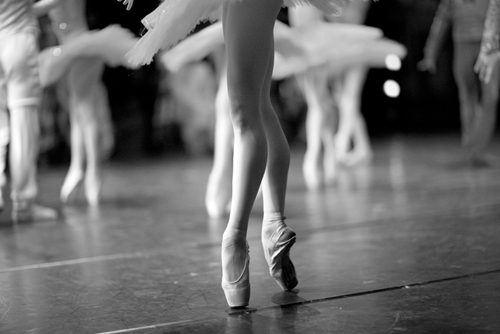Fitting 30 dancers on one stage might sound impossible. Even if you only have a group of 10 dancers, having them move together seamlessly during a performance can still be a logistical headache. Creating group choreography requires some advanced planning, careful consideration and keen spatial awareness.
You want the audience’s eyes to be on your dancers’ graceful movements and impressive skills – not on how they’re bumping elbows with each other. Follow these tips for creating effective group choreography that wows the crowd.
Identify the Strongest Areas of the Stage
To accommodate a large group of dancers on stage at one time, you need to understand the unique characteristics of each section of the stage itself. The center of the stage attracts the most attention, unsurprisingly, so place any soloists there. However, it’s important to not overuse the center, since the more you use the weaker its visible impact, noted Sandra Cerny Minton in her book, “Choreography: A Basic Approach Using Improvisation.”
Placing dancers downstage is good for intimate sections of group choreography or those that require dancers to be particularly emotional, because the area is closest to the audience. To create a sense of mystery, it’s effective to place dancers upstage. Cerny noted that the areas toward the right and left sides of the stage are comparably weak, though that doesn’t mean they shouldn’t be used at all. The key is creatively and effectively using the entirety of the space available to you.
Think Outside the Box
Sometimes, you need to expand your idea of what constitutes the stage. DanceSpirit Magazine described the experiences of Suzi Taylor, choreographer of the New York City Dance Alliance Nationals Senior Outstanding Dancer performance. She had to fit a whopping 145 dancers onstage at one time, and understandably couldn’t do so without having them all constantly bump into each other.
She then came up with the idea to have some of the dancers on the floor in front of the stage. It turned out to be the perfect solution, and she used the space to create unique level changes. Don’t be afraid to get creative in your group choreography or the way that you use the space.
Incorporate Patterns
An article by Dance Advantage provided a list of tips for dance teachers who were tasked with choreographing a musical theater show, and while ballet and performance theater are very different, there are some tips that ballet choreographers can borrow to effectively choreograph large groups of dancers. One valuable tip is to build patterns of movement into your choreography.
According to the article, audiences enjoy watching recurring motifs, and repeating the same group of movements in different places throughout the piece helps keep the audience engaged. Incorporating patterns is also useful because it helps provide structure for the dancers, especially if the rest of the choreography is complex or difficult.
Utilize Creative Devices
When faced with the overwhelming task of choreographing a dance for a large group of students, you may be tempted to have all perform the same movements in synchronization. Unfortunately, though, this is dull for the audience and doesn’t do justice to your dancers’ skill sets. But on the other hand, having every dancer do completely different movements can be dizzying and doesn’t give the audience anything to focus on. A good trick for effectively choreographing a large group of dancers is to take advantage of the myriad of patterns, contrasts and other unique choreographic devices.
Break your dancers into small groups, and have them do complementary movements where they are all doing the same movement but in slightly different ways – for example, one group jetés toward the left while the other jetés toward the right. You can have your dancers do contrasting movements, for example having a few dancers move across the stage quickly while a couple other dancers make slow movements.
Another idea is to include successional movements where a certain skill or movement is quickly performed by each dancer one after another, creating a waterfall- or domino-like effect. You have the power to create a spectacular piece that is full of visional splendor, so don’t be afraid to experiment with different devices.


